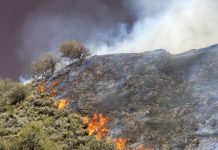In a study of over 2,000 streams around North America, researchers reveal the escalating impact human activity has on flooding – creating climate fragility
By analysing the seasonal flow patterns of 2,272 streams in both Canada and the US, University of Waterloo researchers found that human-managed streams – those which are impacted by human developments like dams, canals, or heavy urbanisation – had significantly varied flow patterns when compared to other natural unaffected streams.
Human activity is pushing climate fragility
Researchers were able to show the ways in which human activity can have devastating effects on water flow and biodiversity. Greater flow increases in managed waterways – caused by increased paved surfaces in urban regions – can result in more severe flooding. However on the other hand flow dampening can lead to water shortages and loss in biodiversity.
To collect a variety of data, the team analysed seasonal flow information totals for 315 natural and 1,957 managed watersheds across North America over 60 years (1950–2009). They analysed natural watersheds untouched by human activity as a control in order to understand the changes and impact human activity has on streamflow and climate fragility in human managed waterways.
When establishing a baseline, the team were then able to compare flow in managed and untouched streams within a radius of 115 kilometres to measure the impact of human developments.
“Compared to their natural neighbours, about 48 per cent of the human-altered streams had significant increases in seasonal flow trends, while 44 per cent showed a significant decrease in the seasonal flow tends,” said Nitin Singh, lead author and postdoctoral fellow in Waterloo’s Department of Earth and Environmental Sciences. “We used machine learning to show conclusively that these changes are caused by human activity.”
“We used machine learning to show conclusively that these changes are caused by human activity.”
Seasonal water changes create important observation window
By taking a seasonal approach, the team at Waterloo were able to observe critical water changes like spring flooding and summer droughts and assess the impact human activity has on water flow and biodiversity.
“It is important to recognize human modifications of the landscape often amplify the effects of climate change on streamflow,” said Nandita Basu, Professor of Earth and Environmental Sciences and Civil and Environmental Engineering.
“We need to take responsibility to manage our landscape sustainably, because it’s not just climate that is changing it.”
The study states that multivariate models reveal that while rainfall, slope and forest cover are the key drivers of seasonal trends in natural watersheds, canals, impervious areas and dam storage dominate the responses in managed watersheds.”
Through the findings, the team revealed that “human-driven seasonal flow alterations highlight the need to develop adaptation strategies that mitigate the associated negative impacts.”











